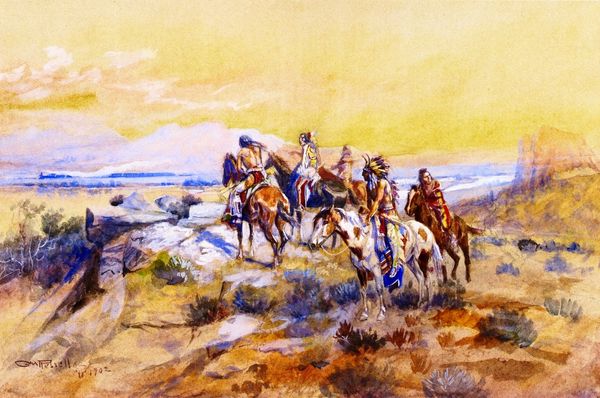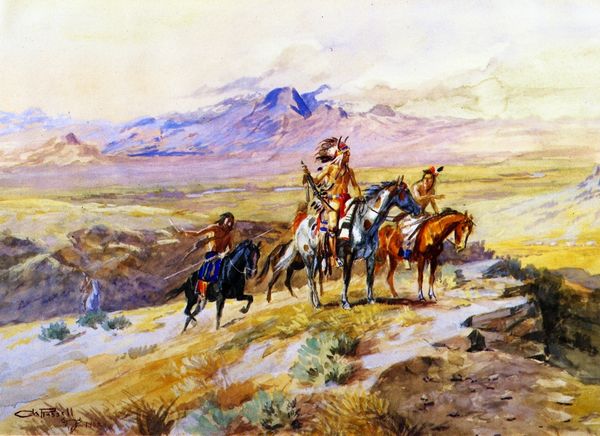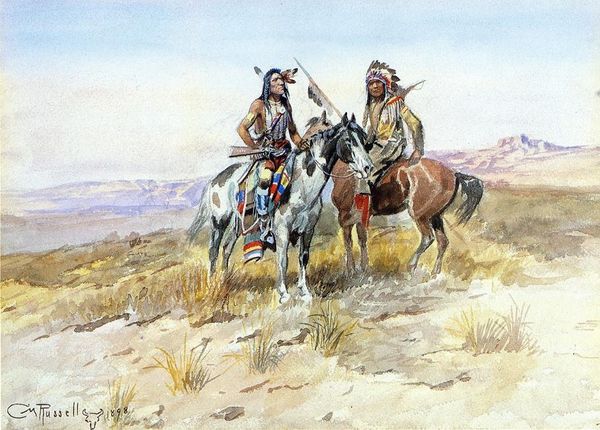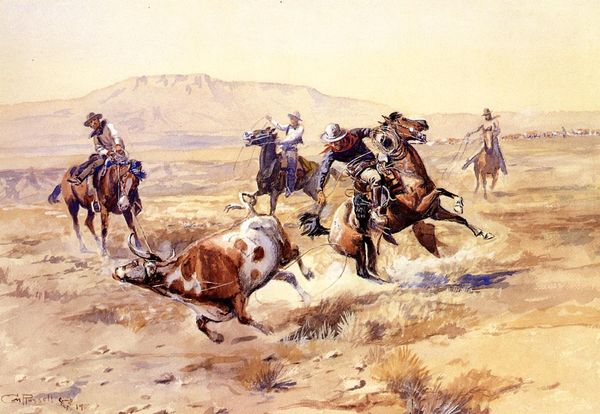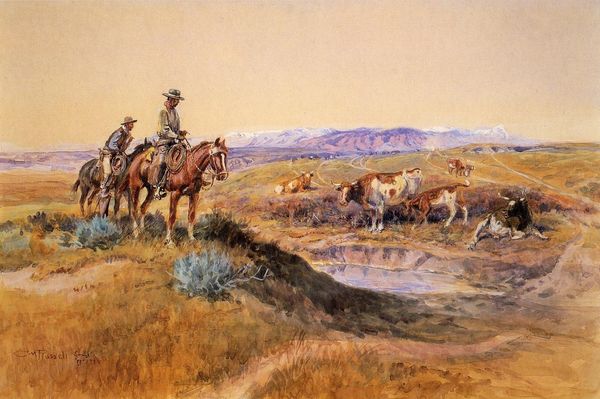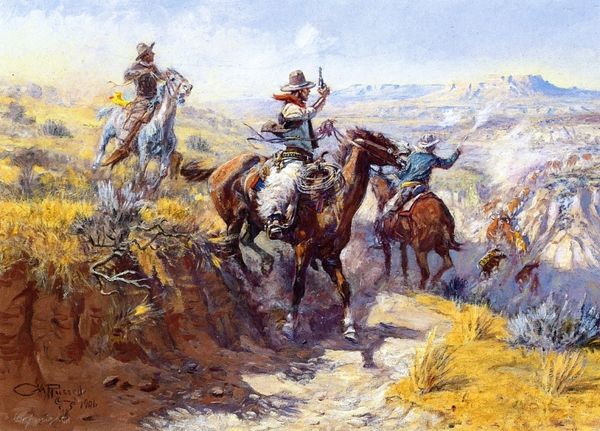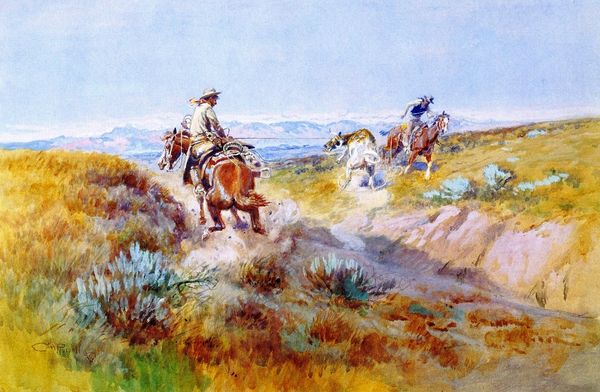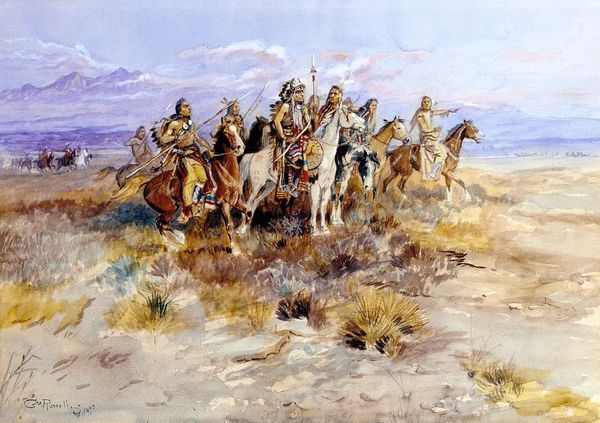
painting
#
narrative-art
#
painting
#
landscape
#
figuration
#
oil painting
#
watercolor
Copyright: Public domain
Editor: Here we have Charles M. Russell’s “The Coming of the White Man,” painted in 1899 with oil on canvas. I'm immediately struck by how the wagons in the distance seem so small, almost insignificant, yet the painting’s title suggests a major shift in the landscape is occurring. What symbols or stories do you see embedded within this painting? Curator: It’s fascinating how Russell positions the viewer on the side of the Indigenous people. Note the hilltop vantage point; the Native Americans are literally and figuratively looking down upon the arriving settlers. But the painting is titled "The Coming of the White Man"— a seemingly neutral statement. Editor: Yes, and even the wagons appear as tiny, organized units that signal a major societal shift, seemingly unstoppable. Curator: Consider also the stance of the horses and riders, watchful but not actively aggressive. This could symbolize a period of assessment and anticipation mixed with growing worry. The vast landscape behind them, normally a symbol of freedom and abundance, now serves as a stage for impending change, a sense of inevitable loss. The landscape itself is no longer purely a source of sustenance, now, perhaps, something to be defended? What future might these riders envision for themselves, given what’s arriving? Editor: It’s as if the painting captures a brief, pregnant moment before everything changes. I hadn't noticed the riders' postures as a mixture of vigilance and pensiveness, that is insightful. Thank you. Curator: The symbols often lie within the visual tension, offering clues to cultural memory and its continuity, even when faced with disruption. I appreciate how keen your observations are!
Comments
No comments
Be the first to comment and join the conversation on the ultimate creative platform.
